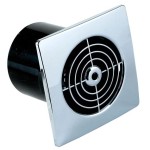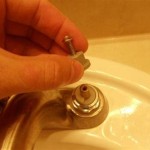How To Clean Grout From Bathroom Tiles
Bathroom grout, the porous material filling the spaces between tiles, is susceptible to accumulating dirt, grime, soap scum, mildew, and mold. This buildup not only detracts from the overall appearance of the bathroom but can also contribute to unpleasant odors and potentially unhealthy conditions. Regular cleaning is essential to maintain hygienic and aesthetically pleasing bathroom tiles.
Several effective methods exist for cleaning grout, ranging from simple DIY solutions to more intensive cleaning techniques. The chosen method will depend on the severity of the staining and the type of tile. Always test any cleaning solution on an inconspicuous area first to ensure it doesn't damage the tile or grout.
Baking Soda and Vinegar: This common household combination offers a natural and effective cleaning solution. Create a paste by mixing baking soda with water to achieve a thick consistency. Apply the paste to the grout lines and let it sit for a few minutes. Then, spray white vinegar onto the paste. The vinegar will react with the baking soda, creating a fizzing action that helps loosen dirt and grime. Scrub the grout lines with a stiff-bristled brush, such as an old toothbrush or grout brush, and rinse thoroughly with clean water.
Hydrogen Peroxide and Baking Soda: For tougher stains, hydrogen peroxide can be more effective. Mix hydrogen peroxide with baking soda to form a paste. Apply the paste to the grout and allow it to sit for 10-15 minutes. Scrub the grout lines vigorously with a brush and rinse with water. Note: Hydrogen peroxide can have a bleaching effect, so test this solution in an inconspicuous area first, especially on colored grout.
Oxygen Bleach: Oxygen bleach is a powerful cleaning agent that can tackle stubborn stains and mildew. Follow the manufacturer's instructions for mixing the oxygen bleach solution. Apply the solution to the grout lines and let it sit for the recommended time, usually 15-30 minutes. Scrub the grout with a brush and rinse thoroughly. Oxygen bleach is generally safe for most tile and grout types but always test in an inconspicuous area first.
Commercial Grout Cleaners: A variety of commercial grout cleaners are available, formulated specifically to target tough stains and mildew. These cleaners come in various forms, including sprays, gels, and pastes. Always follow the manufacturer's instructions carefully. Some commercial cleaners contain harsh chemicals, so adequate ventilation is crucial. Wear gloves and eye protection when using these products.
Steam Cleaning: Steam cleaning offers a chemical-free method for cleaning grout. A steam cleaner uses hot steam to loosen and remove dirt, grime, and mildew. Direct the steam nozzle onto the grout lines, moving it slowly to allow the steam to penetrate. Wipe away the loosened dirt with a clean cloth or sponge. Steam cleaning is particularly effective for removing soap scum and mildew.
Grout Brushes and Tools: Choosing the right tools is essential for effective grout cleaning. Stiff-bristled brushes, such as grout brushes or old toothbrushes, are ideal for scrubbing grout lines. A grout saw or scraper can be used to remove particularly stubborn buildup. For larger areas, a power scrubber with a grout cleaning attachment can save time and effort.
Preventing Grout Staining: Regular cleaning is the best way to prevent grout from becoming heavily stained. Wipe down shower walls and floors after each use to remove soap scum and prevent mildew growth. Seal the grout periodically to prevent it from absorbing stains. Grout sealers create a protective barrier that repels dirt and moisture. Apply the sealer according to the manufacturer's instructions.
Maintaining Clean Grout: Once the grout is clean, regular maintenance will keep it looking its best. Spraying the grout lines with a mixture of water and vinegar once a week can help prevent mildew growth and keep the grout looking fresh. Regularly sweeping or vacuuming the bathroom floor will also help prevent dirt from accumulating in the grout lines.
Addressing Deeply Stained Grout: For grout that is deeply stained or discolored, professional cleaning or grout replacement might be necessary. Professional cleaners have specialized equipment and expertise to handle tough stains. Grout replacement involves removing the old grout and applying new grout. This can refresh the appearance of the bathroom and improve hygiene.
Choosing the Right Cleaning Method: The optimal cleaning method will depend on the type of tile and grout, the severity of the staining, and individual preferences. Always prioritize safety by testing cleaning solutions in an inconspicuous area and wearing appropriate protective gear. Regular cleaning and maintenance are crucial for preserving the appearance and longevity of bathroom grout.

How To Clean Grout Cleaning Stains

How To Clean Grout In Your Shower Alpine Carpet Cleaning

How To Clean Mold In Shower Grout Tips And Tricks Certified Care

3 Top Secret Tricks For Cleaning With Vinegar Making Lemonade

How To Clean Grout Tile Cleaning Tips Simply Spotless

The Ultimate Guide To Cleaning Grout 10 Diy Tile Cleaners Tested Bren Did

How To Clean Bathroom Tile And Grout Reviews By Wirecutter

How To Clean Grout In Shower Simple S Keep Your Bathroom Tiles Gleaming Express Co

How To Clean Grout With A Homemade Cleaner

How To Clean Refresh And Seal Your Grout Easily Ly
Related Posts







